Facial Treatment
Elevate Your Skin’s Wellness with Facial Treatments
Facial treatments are a range of skin care treatments for the face, typically performed in a spa, salon, or medical office by licensed professionals or estheticians.
Facial treatments are generally relaxing and cleansing procedures that exfoliate, hydrate, and nourish the skin. These treatments are designed to improve the overall health and appearance of the skin on the face.
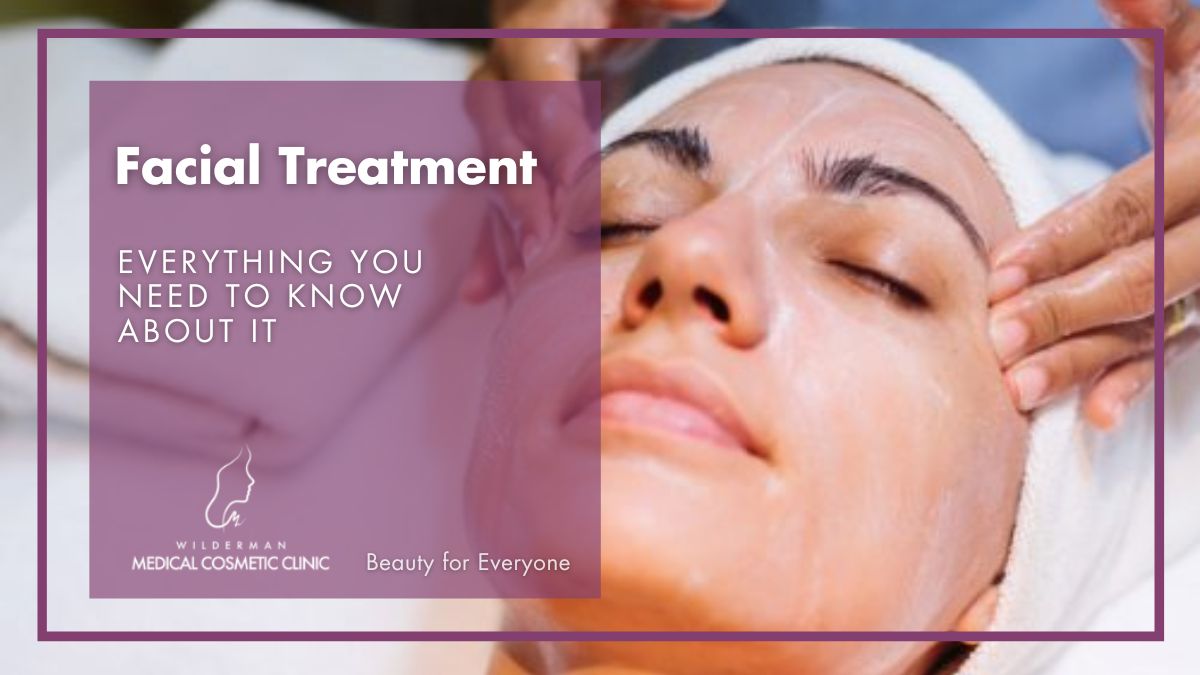
Get immediate answers to your questions about treatment options, costs, expected outcomes, and more.
- Expert Diagnosis
- Customized Treatment Plans
- No Obligation
- Comfort and Privacy
- Immediate Answers
Facial treatments can target various skin concerns such as acne, dryness, wrinkles, pigmentation issues, and more.
Are you a good candidate?
While facial treatments can be beneficial for many people, there are certain individuals who should avoid or be cautious about getting these treatments. It’s important to consult with a qualified esthetician before undergoing any facial treatment, especially if you fall into one of the following categories:
- Sunburned or irritated skin: If your skin is currently sunburned, windburned, or otherwise irritated, it’s best to wait until your skin has fully healed before getting a facial. Facial treatments could further aggravate the skin and delay the healing process.
- Open wounds or sores: If you have open wounds, cuts, or active cold sores on your face, it’s crucial to avoid facials. Open skin can easily become infected during a facial, and the treatment could worsen the condition.
- Skin infections or conditions: Individuals with certain skin infections (such as impetigo or staph infection) or chronic skin conditions (such as eczema or psoriasis) should avoid facials or inform their esthetician about their condition before the treatment. Some facials, especially those involving steam and extraction, can exacerbate these conditions.
- Allergies or sensitivities: If you have known allergies or sensitivities to certain skincare products or ingredients, make sure to inform your esthetician beforehand. They can then choose products that are suitable for your skin type and won’t cause an allergic reaction.
- Recent facial procedures: If you’ve recently undergone facial cosmetic surgery, chemical peels, microdermabrasion, or other intensive facial treatments, consult your healthcare provider or the professional who performed the procedure before scheduling a facial. Your skin needs time to heal, and inappropriate treatments could damage the healing tissue.
- Pregnancy: Pregnant women should be cautious about certain ingredients and treatments used in facials. Some chemicals and procedures may not be safe during pregnancy. It’s advisable to consult a healthcare provider before undergoing any facial treatment during pregnancy.
For whom would this treatment be suitable?
Facial treatments can be suitable for many people, especially when performed by qualified and experienced professionals. Here are some common skin issues and concerns for which facial treatments can be beneficial:
Dull or uneven skin tone: Facials often include exfoliation and brightening treatments that can improve skin texture and promote a more even complexion.
Acne and acne scars: Certain facials, like those involving deep cleansing, extraction, and specialized acne-fighting products, can help manage acne and reduce the appearance of acne scars over time.
Dry or dehydrated skin: Hydrating facials and treatments with moisturizing masks can replenish moisture, leaving the skin feeling soft and hydrated.
Fine lines and wrinkles: Anti-aging facials often include ingredients like retinoids, peptides, and antioxidants that can help reduce the appearance of fine lines and wrinkles.
Sun damage and pigmentation: Facials containing ingredients like vitamin C and alpha hydroxy acids (AHAs) can help fade sunspots and hyperpigmentation, promoting a more even skin tone.
Sensitive skin: People with sensitive skin can benefit from facials specifically tailored to their skin type, using gentle, hypoallergenic products that soothe and calm the skin.
Oily skin: Deep-cleansing facials can help control excess oil production, minimize the appearance of large pores, and prevent acne breakouts in individuals with oily skin.
Preventative skincare: Regular facials can be part of a proactive skincare routine, helping to maintain healthy skin and prevent various skin issues from developing.
Relaxation and stress relief: Facials often include facial massages and relaxation techniques, providing not only physical benefits for the skin but also mental relaxation and stress relief.
It’s essential to consult with a licensed esthetician to determine the most suitable facial treatment for your specific skin type and concerns. They can assess your skin, discuss your goals, and recommend the appropriate facial procedure and products tailored to your needs.
Hereafter, we will explore some of the benefits and treatments that can help you in your treatment.
Benefits of the Facial Treatments
Facial treatments offer a wide range of benefits for the skin and overall well-being when performed by skilled professionals. Here are some of the key benefits of facial treatments:
- Deep cleansing: Facials thoroughly cleanse the skin, removing dirt, oil, and impurities. This deep cleansing helps prevent breakouts and promotes clearer skin.
- Exfoliation: Many facials include exfoliation techniques that remove dead skin cells, promoting a smoother complexion and improving the skin’s texture.
- Reduced fine lines and wrinkles: Help minimize the appearance of fine lines and wrinkles, leading to a more youthful complexion.
- Improved circulation: Facial massages and steam treatments can enhance blood circulation to the facial area, providing oxygen and nutrients to the skin cells and promoting a healthy glow.
- Hydration: Facials often include moisturizing masks and treatments that hydrate the skin, leaving it soft, supple, and well-nourished.
- Treatment of skin issues: Facials can be customized to address specific skin concerns, such as acne, dryness, uneven skin tone, and aging signs. Specialized products and techniques can target these issues effectively.
- Pore minimization: Regular facials can help minimize the appearance of enlarged pores, giving the skin a smoother and more refined look.
- Enhanced absorption of skincare products: By removing dead skin cells and impurities, facials enable better absorption of skincare products, allowing them to penetrate the skin more effectively.
- Promotion of collagen production: Some facial treatments, especially those involving anti-aging techniques and ingredients, can stimulate collagen production, leading to firmer and more youthful-looking skin.
- Customized skincare: A professional esthetician can assess your skin’s needs and tailor the facial treatment to address your specific concerns, providing personalized care.
- Relaxation and self-care: Beyond the physical benefits, facials provide a relaxing and pampering experience, promoting self-care and mental well-being.
It’s important to note that the specific benefits of a facial treatment can vary based on the type of facial, the products used, and individual skin needs. For optimal results and safety, it’s advisable to have facials performed by licensed estheticians or dermatologists who can customize treatments according to your skin type and concerns.
What are the precautions that need to be taken?
When undergoing facial treatments, it’s important to take certain precautions to ensure your safety and achieve the best results. Here are some essential precautions to consider:
Consultation: Before getting a facial, have a consultation with the esthetician. Discuss your skin concerns, allergies, medical history, and any medications you are taking. This information will help the esthetician choose appropriate products and techniques for your skin type.
Choose a qualified professional: Always go to a licensed and experienced esthetician for your facial treatments.
Patch test: If you have sensitive skin or are trying new products, request a patch test to check for allergic reactions. This is especially important if you have a history of skin allergies.
Avoid sun exposure: After a facial, your skin may be more sensitive to sunlight. Avoid direct sun exposure and wear sunscreen to protect your skin from harmful UV rays.
Avoid makeup: If possible, avoid wearing makeup immediately after a facial to allow your skin to breathe and absorb the benefits of the treatment. If you need to wear makeup, choose mineral or non-comedogenic products.
Skip certain activities: Avoid activities that cause excessive sweating, such as vigorous exercise and sauna sessions, for at least 24 hours after a facial. Sweating can irritate freshly treated skin.
Follow post-treatment instructions: Your esthetician will likely provide you with specific post-treatment instructions. Follow these guidelines carefully to ensure the best results and minimize the risk of complications.
Avoid harsh skincare products: After a facial, avoid using harsh skincare products, such as products containing strong acids or retinoids, for a few days. Stick to gentle, non-irritating skincare products to maintain your skin’s health.
Stay hydrated: Drink plenty of water before and after your facial to keep your skin hydrated and help flush out toxins.
Be patient: Some facials, especially those targeting specific skin issues, may require multiple sessions to see significant results. Be patient and follow the recommended treatment plan.
Communicate: If you have any concerns about the procedure or its effects on your skin, communicate openly with your esthetician. They can address your concerns and adjust the treatment if necessary.
By following these precautions and guidelines, you can enhance the effectiveness of your facial treatment while minimizing the risk of adverse reactions or complications.
Are there any side effects?
While facial treatments are generally safe and beneficial for the skin, there can be some side effects, especially if the treatment is not performed correctly or if the individual has specific skin sensitivities. Common side effects associated with facial treatments include:
Redness: It’s normal to experience mild redness, especially after treatments involving exfoliation, steam, or extractions. This redness usually subsides within a few hours to a day.
Irritation: Some individuals may experience skin irritation, itching, or a tingling sensation, especially if they have sensitive skin. This can be a reaction to specific products used during the facial. Inform your esthetician immediately if you experience excessive discomfort.
Breakouts: After deep cleansing and extraction, some people might experience temporary breakouts or pimples. This is usually a result of the skin purging impurities and should improve after a few days. However, if the breakout persists, consult your esthetician.
Dryness or peeling: Exfoliating facials can sometimes cause dryness or flakiness, particularly in individuals with dry or sensitive skin. Proper moisturization is essential to address this issue.
Sensitivity to sun: Your skin may become more sensitive to sunlight after a facial, especially if exfoliation is involved. Always wear sunscreen to protect your skin from UV damage.
Bruising: In some cases, especially after extractions, minor bruising can occur. This is usually temporary and will fade on its own.
Allergic reactions: Individuals with allergies may experience allergic reactions to specific products used during the facial. This can manifest as redness, swelling, rash, or itching. A patch test before the facial can help prevent severe reactions.
Infection: Although rare, improper hygiene or unsanitary tools can lead to infections, particularly if the skin is broken during extractions. It’s crucial to go to a reputable and clean facility to minimize this risk.
Skin sensitivity: Certain treatments, such as chemical peels, can increase skin sensitivity, making the skin more prone to irritation. Following post-treatment care instructions is essential to prevent complications.
It’s important to note that most of these side effects are mild and temporary. If you experience severe or persistent side effects, it’s crucial to contact your esthetician or healthcare provider promptly. Choosing a qualified and experienced professional, communicating your concerns, and following post-treatment care instructions can significantly reduce the risk of adverse reactions.
What to do Before and After your Treatment
Avoid wearing makeup on your skin during the day or two that follow your facial, to give your skin time to heal. Facials are one of the most popular beauty treatments, as they are both extremely beneficial for the skin, and also very relaxing.
All facial treatments follow structure and order. They will begin with makeup removal and cleansing. The cleansing is normally repeated twice to ensure it is thorough. Then comes some method of exfoliation to remove dead skin cells and smooth the surface of the skin.
Also, the skin is toned and the final eye, neck, and face creams are applied. In a ‘hands-on’ treatment, there are no electrotherapy machines used and the facialist will use her hands to perform the facial treatment.
Hurry up and book a facial for yourself:
OxyGeneo
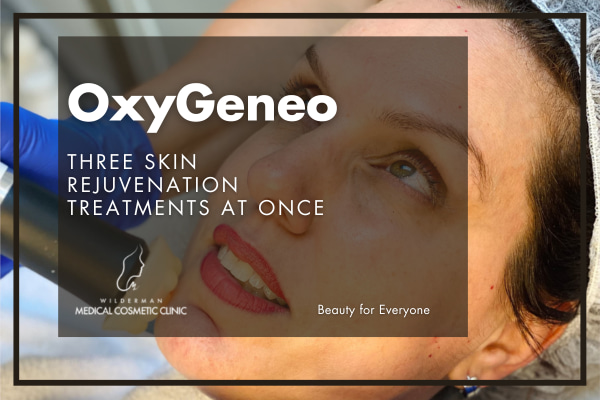
OxyGeneo Facial Treatment – Photo of a client receiving OxyGeneo at our Medical Cosmetic Clinic.
OxyGeneo is a popular facial treatment that combines three skin-enhancing techniques into one: exfoliation, infusion, and oxygenation. It is often referred to as the “super facial” due to its ability to provide multiple benefits in a single session.
Here’s how OxyGeneo works and the potential benefits it offers:
How does OxyGeneo™ Facial Treatment work?
Exfoliation: OxyGeneo uses a specialized handpiece that emits carbon dioxide bubbles. These bubbles gently burst on the skin’s surface, creating a physiological response that triggers exfoliation. The exfoliation helps remove dead skin cells, allowing for better product penetration and skin renewal.
Infusion: Simultaneously, OxyGeneo infuses the skin with nutrient-rich gels that contain active ingredients like hyaluronic acid, peptides, and antioxidants. These ingredients nourish and rejuvenate the skin, addressing specific concerns such as hydration, fine lines, and uneven skin tone.
Oxygenation: The carbon dioxide bubbles generated during the exfoliation process also stimulate oxygen-rich blood flow to the treated area. This enhanced oxygenation promotes skin vitality and a radiant complexion.
It’s important to note that the results of OxyGeneo facials can vary based on individual skin types and concerns. Additionally, multiple sessions may be recommended for optimal and long-lasting results.
Chemical Peel
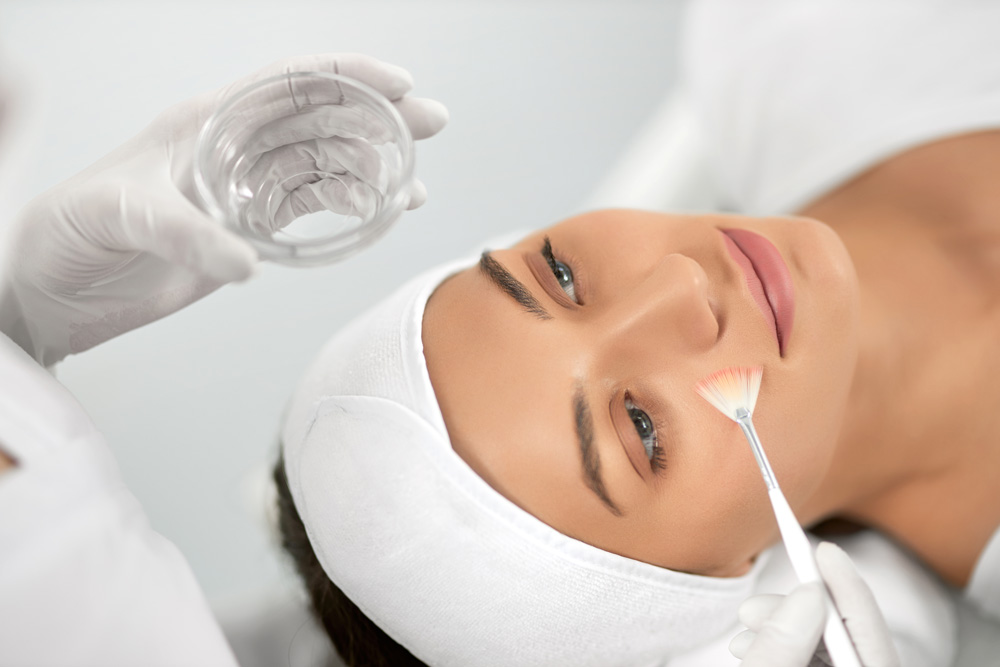
A chemical peel is a cosmetic procedure in which a chemical solution is applied to the skin to remove its outer layers. This process encourages the skin to peel, revealing a smoother, more even complexion.
Chemical peels are commonly used to improve the appearance of the skin on the face, neck, or hands. Here’s how chemical peels work, the types available, and the benefits associated with the procedure:
The depth depends on the concentration of the chemicals and the length of time it is allowed to come into contact with the skin. Continuous and repeated treatment is best to see the effects.
Not all peels are equal, and different skin types are suited for different formulas.
How chemical peels work:
Cleansing: The skin is thoroughly cleansed to remove oils and prepare it for the peel.
Application of chemical solution: A chemical solution (acid) is applied to the skin. The type and strength of the solution used depend on the specific concerns being addressed and the depth of the peel.
Peeling process: The chemical solution causes the outer layer of the skin to peel off over the next few days to a week. This process reveals a fresh layer of skin underneath.
Types of chemical peels:
Superficial peels: These peels use mild acids (such as alpha hydroxy acids, AHAs) to penetrate only the outermost layer of the skin. They are used to improve mild skin discoloration and rough skin texture.
Medium peels: Medium-depth peels use stronger acids (like trichloroacetic acid, TCA) to penetrate the outer and middle layers of the skin. They are effective for treating fine lines, wrinkles, and uneven skin tone.
Deep peels: Deep peels use strong acids (such as phenol) to deeply penetrate the middle layer of the skin. They are used for more severe skin issues, like deep wrinkles and extensive sun damage. Deep peels are usually performed by dermatologists or plastic surgeons.
Alumier MD peel: Combining lactic acid, salicylic acid, and resorcinol creates a multifaceted solution that is effective in reducing the appearance of fine lines, wrinkles, and hyperpigmentation problems such as age, color changes, and uneven skin tone.
Deep or significant improvements may require multiple sessions spaced several weeks apart. Recovery time varies based on the depth of the peel. Superficial peels may have minimal downtime, while deeper peels may require a week or more for recovery. Before considering a chemical peel, it’s essential to consult with a licensed skincare professional.
AlumierMD Peel Facial Treatment
By combining lactic acid, salicylic acid and resorcinol creates a multifaceted solution that is effective in reducing the appearance of fine lines, wrinkles, and hyperpigmentation problems such as age, color changes, and uneven skin tone.
BDR Facial Treatment
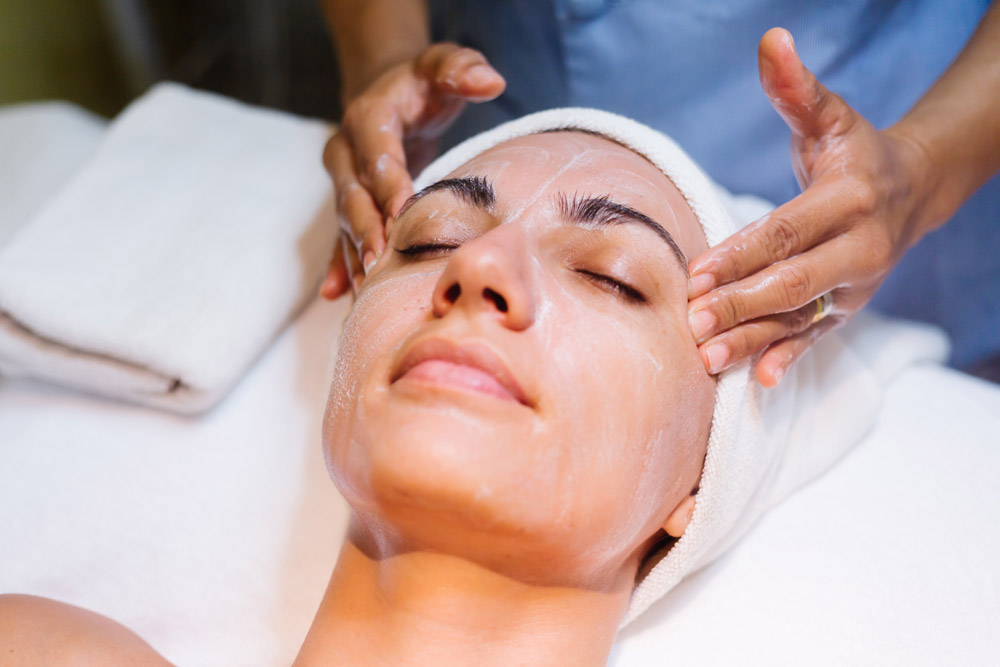
The natural production of hyaluronic acid, collagen, and elastin slows down over time and we start to lose strength and get wrinkles.
Our cycle of cell regeneration is declining and dead cells begin to accumulate on the surface of the skin leading to a tired appearance.
By using a combination of advanced technology and active ingredients, BDR promotes healthy functioning and restores a lean, smooth, and bright appearance. Also by using a combination of advanced technology and active ingredients BDR kills germs that cause acne, opens pores and regulates sebum production, and restores skin to a healthy, balanced state.
It firms sagging skin, though promotes a strong, even-toned complexion. It is the best non-invasive program from Germany that offers more than just any other skincare product or treatment.
HydraFacial Facial Treatment
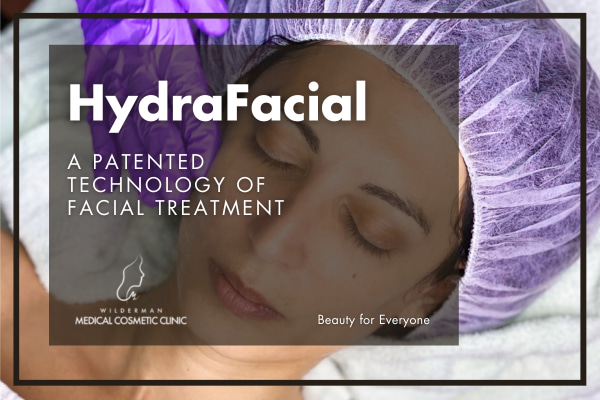
HydraFacial Facial Treatment – Photo of a client receiving Hydrafacial treatment at our Medical Cosmetic Clinic.
HydraFacial is a popular non-invasive facial treatment that combines several skincare techniques to cleanse, exfoliate, extract impurities, hydrate, and protect the skin. It is designed to improve the overall appearance and health of the skin, addressing a variety of skin concerns.
Here’s how HydraFacial works and the benefits associated with the treatment:
How HydraFacial works:
Cleansing and exfoliation: The treatment begins with a gentle cleansing and exfoliation step to remove dead skin cells and prepare the skin for further treatments.
Acid peel: A mild chemical peel solution is applied to the skin, helping to break up impurities and unclog pores. The peel used in HydraFacial is gentle and non-irritating.
Extraction: A specialized vacuum-powered extraction method is used to remove blackheads, whiteheads, and other impurities from the pores painlessly.
Hydration: The HydraFacial device delivers a moisturizing serum composed of antioxidants, hyaluronic acid, and peptides to the skin. This step hydrates and nourishes the skin, leaving it radiant and supple.
Protection: The final step involves applying a broad-spectrum sunscreen or other protective products to shield the skin from environmental damage.
It’s important to have HydraFacial performed by a licensed and experienced esthetician or skincare professional. Regular HydraFacial sessions can help maintain healthy and radiant skin.
Microdermabrasion Facial Treatment
Microdermabrasion is a non-invasive cosmetic procedure that uses a mechanical exfoliation technique to remove the outermost layer of dead skin cells, revealing a smoother and more youthful complexion. It is commonly used to improve skin texture and reduce the appearance of fine lines, wrinkles, acne scars, enlarged pores, and sun damage.
Here’s how microdermabrasion works and what you can expect from the procedure:
How Microdermabrasion works:
Cleansing: Before the procedure begins, the skin is thoroughly cleansed to remove makeup, oils, and impurities.
Exfoliation: During the microdermabrasion treatment, a handheld device sprays tiny crystals (such as aluminum oxide) onto the skin and simultaneously vacuums them back up along with the exfoliated skin cells. This mechanical exfoliation process gently removes the outer layer of dead skin cells, promoting skin renewal.
Suction: The vacuum suction of the microdermabrasion device helps stimulate blood circulation, enhance lymphatic drainage, and improve the skin’s elasticity.
Moisturization and sunscreen: After the exfoliation process, a moisturizer and sunscreen are typically applied to protect the newly revealed skin and promote healing.
Microdermabrasion is usually painless, but some individuals may experience mild discomfort or a scratching sensation during the procedure. Significant improvements may require a series of microdermabrasion sessions, spaced several weeks apart.
Conclusion
In conclusion, facial treatments come in various forms, each offering specific benefits for the skin. From classic facials to advanced treatments like HydraFacial, BDR, and microdermabrasion, these procedures aim to improve skin texture, address specific concerns, and promote overall skin health.
When considering a facial treatment, it’s crucial to consult with a qualified esthetician or skincare professional. They can assess your skin type, discuss your concerns, and recommend the most suitable treatment tailored to your needs.
Facial treatments, when performed by experienced professionals, can provide numerous benefits, including deep cleansing, exfoliation, hydration, and rejuvenation. They can help reduce the appearance of fine lines, wrinkles, acne scars, and sun damage, promoting a more youthful and radiant complexion.
Remember to follow pre- and post-treatment instructions, communicate openly with your skincare provider, and prioritize sun protection and skincare maintenance for long-lasting results. Taking proper care of your skin, both at home and through professional treatments, can contribute significantly to your overall skin health and confidence.
References
Geneo. (n.d.). OxyGeneo. Retrieved from https://geneo.ca/oxygeneo/ (Accessed Nov 2, 2023).
Medical News Today. (Updated on May 30, 2023). How Do Chemical Peels Work. Retrieved from https://www.medicalnewstoday.com/articles/chemical-peels (Accessed Nov 2, 2023).
Park Aesthetics. (n.d.). BDR Treatment. Retrieved from https://www.park-aesthetics.com/bdr/ (Accessed Nov 2, 2023).
Healthline. Microdermabrasion: Procedure, Benefits, Side Effects, and More. Retrieved from https://www.healthline.com/health/microdermabrasion#side-effects. (Accessed Nov 2, 2023).
Healthline. (Dec 9, 2020). What Is HydraFacial? Retrieved from https://www.healthline.com/health/what-is-hydrafacial (Accessed Nov 2, 2023).
Frequently Asked Questions (FAQs)
What can I expect during a facial treatment?
During a facial treatment, you can expect a series of steps designed to cleanse, exfoliate, and nourish your skin. Here’s what typically happens during a facial:
Consultation: The esthetician will discuss your skin concerns, goals, and medical history to tailor the treatment to your needs.
Cleansing: Your face will be cleansed to remove makeup, dirt, and oil, allowing the esthetician to assess your skin.
Skin analysis: The esthetician examines your skin to determine its type and any specific issues, such as dryness, acne, or sensitivity.
Exfoliation: A scrub, exfoliating mask, or microdermabrasion is used to remove dead skin cells, promoting a smoother complexion.
Extraction: If necessary, the esthetician may perform gentle extractions to remove blackheads or whiteheads.
Massage: A facial massage promotes relaxation, improves circulation, and aids in product absorption.
Mask: A mask suited to your skin type is applied, providing additional nourishment or addressing specific concerns like hydration or firming.
Serums and moisturizers: Serums, moisturizers, and sunscreens are applied to protect and hydrate your skin.
Advice: The esthetician provides skincare advice and product recommendations based on your skin’s needs.
Relaxation: Facials often include a soothing ambiance, making the experience relaxing and enjoyable.
What are the different types of facial treatments?
There are numerous types of facial treatments, each designed to address specific skin concerns and provide various benefits. Here are some common types of facial treatments:
- Classic facial: A basic facial typically includes cleansing, exfoliation, steam, extractions (if needed), facial massage, a mask, and moisturizer. It aims to cleanse, nourish, and revitalize the skin.
- Deep cleansing facial: This facial focuses on thorough cleansing, often involving deep exfoliation, steam, and extractions to remove impurities and unclog pores. It is beneficial for individuals with acne-prone or congested skin.
- Hydrating facial: Hydrating facials use moisture-rich products and masks to replenish and hydrate dry or dehydrated skin, leaving it smooth and supple.
- Anti-aging facial: Anti-aging facials incorporate ingredients and techniques designed to reduce the signs of aging, such as fine lines, wrinkles, and loss of elasticity. These facials often include products with antioxidants, peptides, and collagen-boosting ingredients.
- Brightening facial: Brightening facials target uneven skin tone, sunspots, and hyperpigmentation. They use ingredients like vitamin C and alpha hydroxy acids (AHAs) to promote a more radiant complexion.
- Acne facial: Acne facials focus on treating acne-prone skin, including deep cleansing, gentle exfoliation, extractions, and the use of anti-acne products. They help reduce breakouts and prevent future ones.
- Sensitive skin facial: Sensitive skin facials use gentle, hypoallergenic products to soothe and calm sensitive or easily irritated skin. These facials aim to reduce redness and promote a balanced complexion.
- Microdermabrasion: Microdermabrasion is a non-invasive exfoliating treatment that uses a machine to remove the outermost layer of dead skin cells. It is effective for improving skin texture, reducing fine lines, and minimizing mild scars.
- Chemical peel: Chemical peels involve the application of a chemical solution to the skin, which exfoliates the top layer and promotes skin regeneration. Chemical peels can address issues like uneven skin tone, acne scars, and wrinkles.
- LED facial: LED (Light Emitting Diode) facials use different wavelengths of light to address various skin concerns, such as acne, inflammation, and signs of aging. LED therapy promotes collagen production and skin rejuvenation.
- Oxygen facial: Oxygen facials involve the application of pressurized oxygen and specialized serums to the skin. This treatment is believed to improve skin hydration, reduce fine lines, and enhance overall skin radiance.
- Collagen facial: Collagen facials use collagen-infused products to improve skin elasticity, firmness, and hydration. Collagen helps reduce the appearance of fine lines and wrinkles.
- Galvanic facial: Galvanic facials use low-level electrical currents to stimulate the skin and enhance the absorption of skincare products. This treatment can improve circulation and promote a healthy complexion.
Throughout the process, communication with the esthetician is key. If you have concerns or preferences, feel free to share them to ensure you have a positive experience and achieve the desired results.
Is there any downtime?
The downtime after a facial treatment is generally minimal, especially for standard facials that do not involve aggressive procedures. Most people can resume their regular activities immediately after the treatment.

